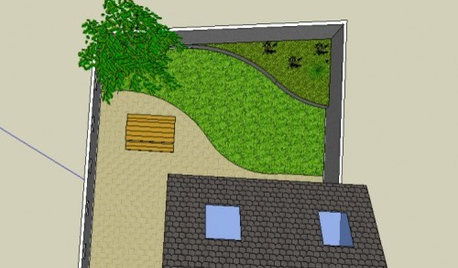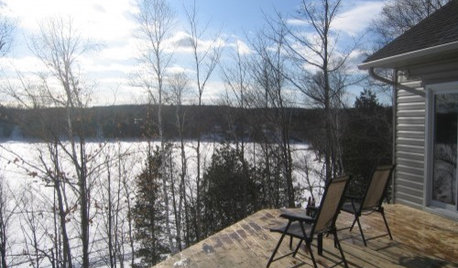please answer my questions on the green peas growing
lotaera
15 years ago
Related Stories

FEEL-GOOD HOMEThe Question That Can Make You Love Your Home More
Change your relationship with your house for the better by focusing on the answer to something designers often ask
Full Story
GREEN DECORATING8 Questions to Help You See Through Green Hype
With the ecofriendly bandwagon picking up some dubious passengers, here's how to tell truly green products and services from the imposters
Full Story
GREEN BUILDINGConsidering Concrete Floors? 3 Green-Minded Questions to Ask
Learn what’s in your concrete and about sustainability to make a healthy choice for your home and the earth
Full Story
GARDENING AND LANDSCAPINGGrow a Lush Privacy Screen
No need to wait forever for patio privacy the green way. These 10 ideas will get your screening up and running in no time
Full Story


KITCHEN DESIGN9 Questions to Ask When Planning a Kitchen Pantry
Avoid blunders and get the storage space and layout you need by asking these questions before you begin
Full Story

EDIBLE GARDENSSummer Crops: How to Grow Tomatoes
Plant tomato seedlings in spring for one of the best tastes of summer, fresh from your backyard
Full Story
HOME OFFICESQuiet, Please! How to Cut Noise Pollution at Home
Leaf blowers, trucks or noisy neighbors driving you berserk? These sound-reduction strategies can help you hush things up
Full Story





denninmi
lotaeraOriginal Author
Related Professionals
Belmont Landscape Architects & Landscape Designers · Manhattan Beach Landscape Architects & Landscape Designers · Framingham Landscape Contractors · North Plainfield Landscape Contractors · Sammamish Landscape Contractors · Wilton Landscape Contractors · Woodbury Landscape Contractors · Oxon Hill Landscape Contractors · Maple Heights Landscape Contractors · Shenandoah Landscape Contractors · Bloomington Decks, Patios & Outdoor Enclosures · Champaign Decks, Patios & Outdoor Enclosures · Detroit Decks, Patios & Outdoor Enclosures · Layton Decks, Patios & Outdoor Enclosures · Highland Decks, Patios & Outdoor Enclosuresfarmerdilla
lotaeraOriginal Author
farmerdilla
lotaeraOriginal Author
lotaeraOriginal Author
farmerdilla
lotaeraOriginal Author
farmerdilla